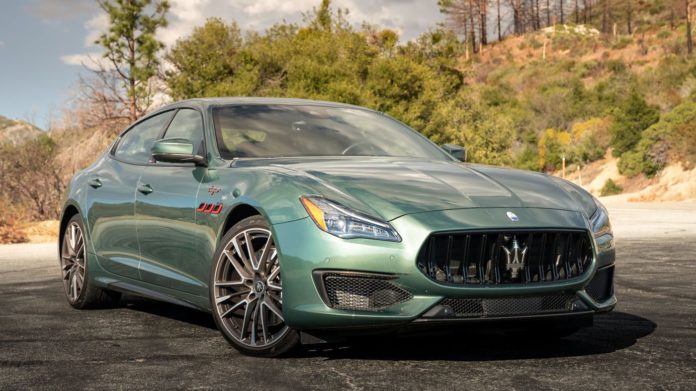The sixth-generation Maserati Quattroporte has served as the brand’s flagship sedan since it began production in 2013. Nearly a decade later, however, the Italian carmaker implemented some much-needed revisions to keep its flagship fresh, one of which was introducing the Trofeo variant for the 2021 model year.
The Trofeo’s goal is simple: to be the best-performing Maserati Quattroporte yet, and at the center of that pursuit is a Ferrari-derived 3.8-liter twin-turbocharged V8. While this engine isn’t new to the Quattroporte, it is now more powerful than ever, boosting power from 523 hp to a more competitive 580 hp.
In a straight line, the Quattroporte is like an Italian muscle car, with an abundance of speed and drama. For better or for worse, this sixth-gen car comes across as old school. While this sizable sedan is still stunning, its segment has completely transformed in the last decade. The Quattroporte isn’t at the cutting edge of tech, performance, or material choice. However, after a few days and a few hundred miles, it’s clear that the Quattroporte has plenty of charm.
We caught our first glimpse of the sixth-gen Quattroporte over a decade ago, ahead of the 2013 Detroit Motor Show. And despite following the now-iconic fifth-gen model, the current car held its own with its sharp front fascia, bulging rear arches, and aggressive stance. It’s a look that has aged remarkably well.
The Quattroporte isn’t overcomplicated in the pursuit of visual interest. It’s simple, balanced, and cohesive. The same goes for the current Trofeo model. Despite it being the new flagship model, you won’t find prominent aero elements or boatloads of exterior carbon bits. It’s still firmly a luxury-focused car with a sporty edge.
Its lower front fascia features a central carbon fiber lip complemented by a subtle touch in its front air intakes. It’s the kind of addition you’d easily miss if you weren’t looking for them. The same goes for the rocker panels, which feature carbon fiber trim, but not for the entire sides of the car. A subtle carbon fiber diffuser flanked by quad exhaust tips brings up the rear. These additions add to the Quattroporte’s aesthetic but don’t push it away from its original luxury persona.
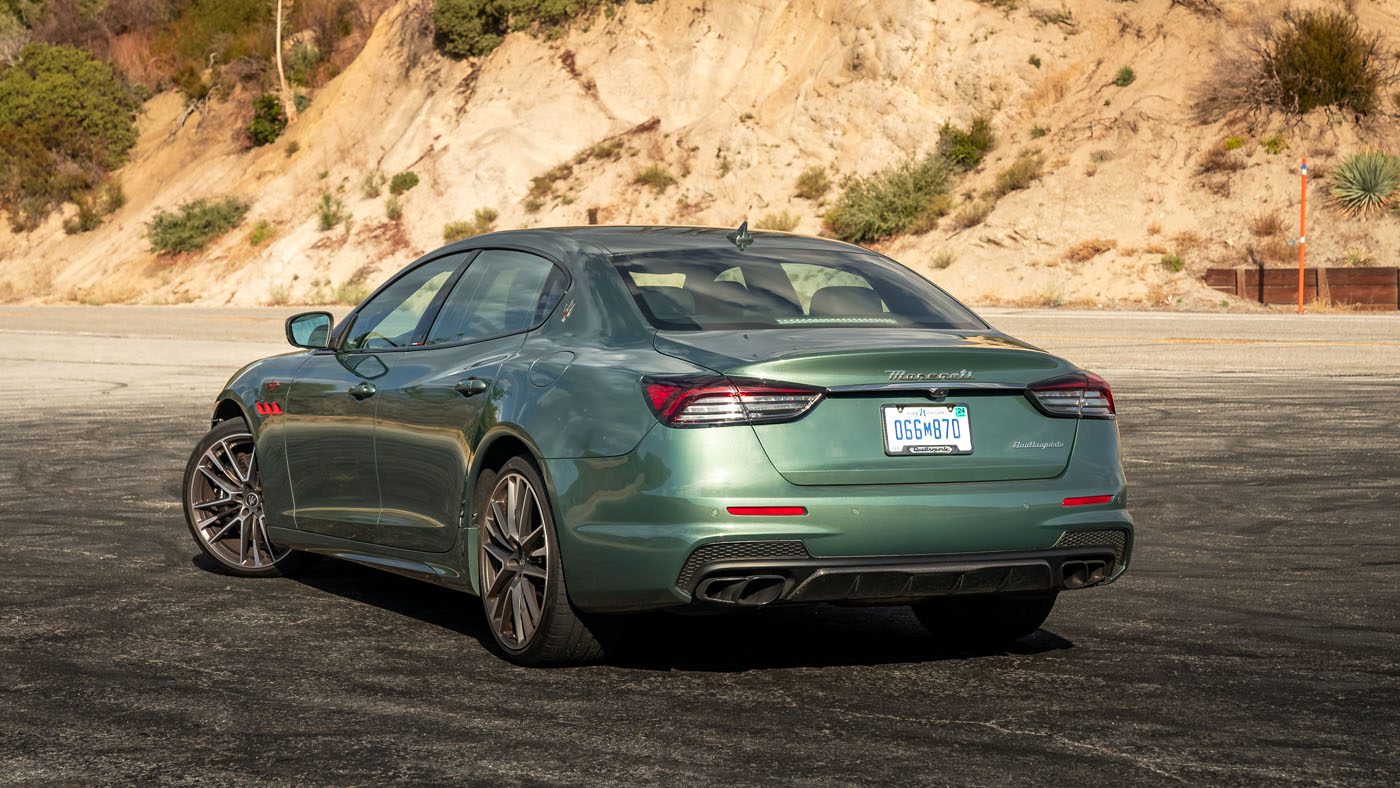
The least luxurious and most exciting part about the Trofeo is its engine. Like the Levante and Ghibli Trofeo, the 3.8-liter twin-turbocharged V8 dominates the driving experience. It develops 580 hp at 6,750 rpm and 538 lb-ft of torque at 2,500 rpm, but unlike in the Levante, that output goes to the rear wheels, not all four. Coupled with an eight-speed ZF automatic transmission, this engine has enough grunt to propel the Quattroporte to 60 mph in 4.5 seconds.
The Best Luxury and Exotic Cars We Reviewed in 2022
In contrast, the Ghibli and Levante Trofeo accomplish that run in 4.3 and 4.1 seconds, respectively. If you want the quickest Trofeo, you’ll be in the family hauler. The lack of traction is partly to blame, but then again, the Quattroporte weighs a hefty 4,661, or 45 lb more than a Ghibli, but 123 lb less than the Levante.
On the road, the Quattroporte Trofeo is a highway monster. With abundant torque at your right foot’s disposal, it is quick to get up and go, and happy to cruise at high speed. It’s where this large sedan is most at home. Take it to a twisty road, and its powertrain becomes laggy, and despite counting on a proven ZF transmission, its calibration can’t keep up with the engine. Click its left paddle for a downshift, and there’s a significant delay before anything happens.
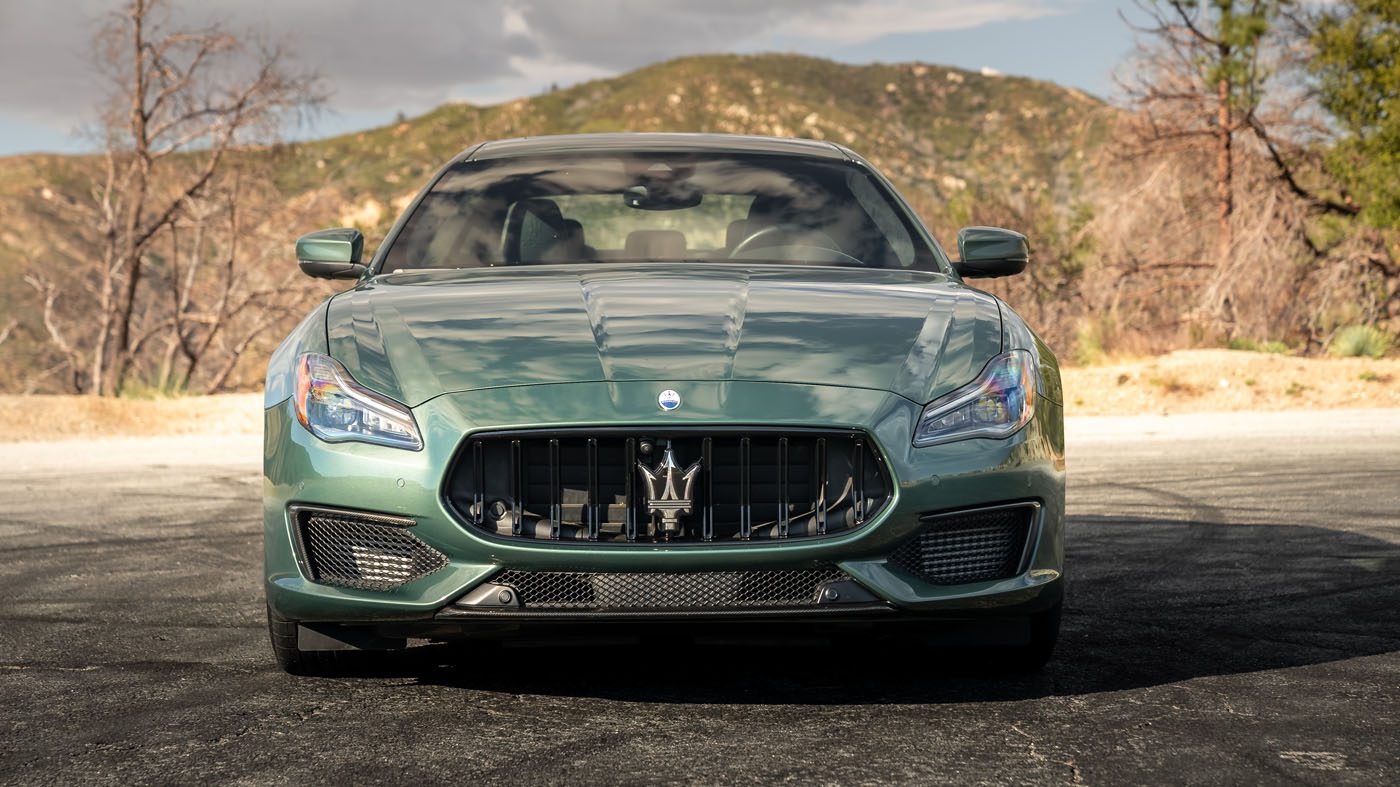
The Trofeo model comes standard with Maserati’s Skyhook suspension system, which consists of active dampers that adapt to various driving conditions. In practice, they are much better than the Levante’s air suspension system but are still far from precise. The Quattroporte is more of a quick cruiser than a canyon carver. Despite this, it isn’t as planted or confidence-inspiring as the Mercedes-Benz S-Class or BMW 7 Series.
Through Los Angeles’s crowded and less-than-perfect streets, the Quattroporte excels. It’s comfortable, smooth and does a great job of isolating bumps. It can be a bit floaty in its softest setting while activating its suspension button takes it too far in the stiff direction.
Like the other Trofeos, the Quattroporte has various drive modes, with the main ones being Normal, Sport, and Corsa. In Corsa, engine and throttle response is the most aggressive, resulting in quick bursts of acceleration, while Normal and Sport are pretty forgiving. The second significant change is the exhaust sound, which is nearly non-existent in Normal but roars to life in Sport and Corsa. It’s not nearly as loud as a Mercedes-AMG product, but there’s enough bark to let you know you’re in something special.

While there’s good feedback from the Trofeo’s large brakes, its steering is fairly muted. While this may be a drawback in an all-out sports sedan, it’s fine in a big luxurious cruiser like the Quattroporte. Like the Levante and Ghibli, the largest Trofeo is most at home on long open roads rather than canyon routes. It wants to cruise, not rip.
While its styling and powertrain are still quite contemporary, the Quattroporte’s interior shows its age. The Italian carmaker has done a good job of modernizing it with updated materials such as the woven leather in the front and rear seats. However, plenty of plastic buttons and switches are easily traceable to other lower-priced Stellantis products. These are easier to forgive in entry-level Ghibli and Levante trims, but this range-topping Trofeo starts at $148,895.
The cabin itself is plenty cozy. Despite sharing similar weight and price figures to the smaller Ghibli, the Quattroporte Trofeo has far more room inside for passengers. It’ll comfortably seat four in its plush and inviting chairs. Despite its sleek sloping roofline, there’s ample headroom for full-size adults compared to the Ghibli’s cramped second row.
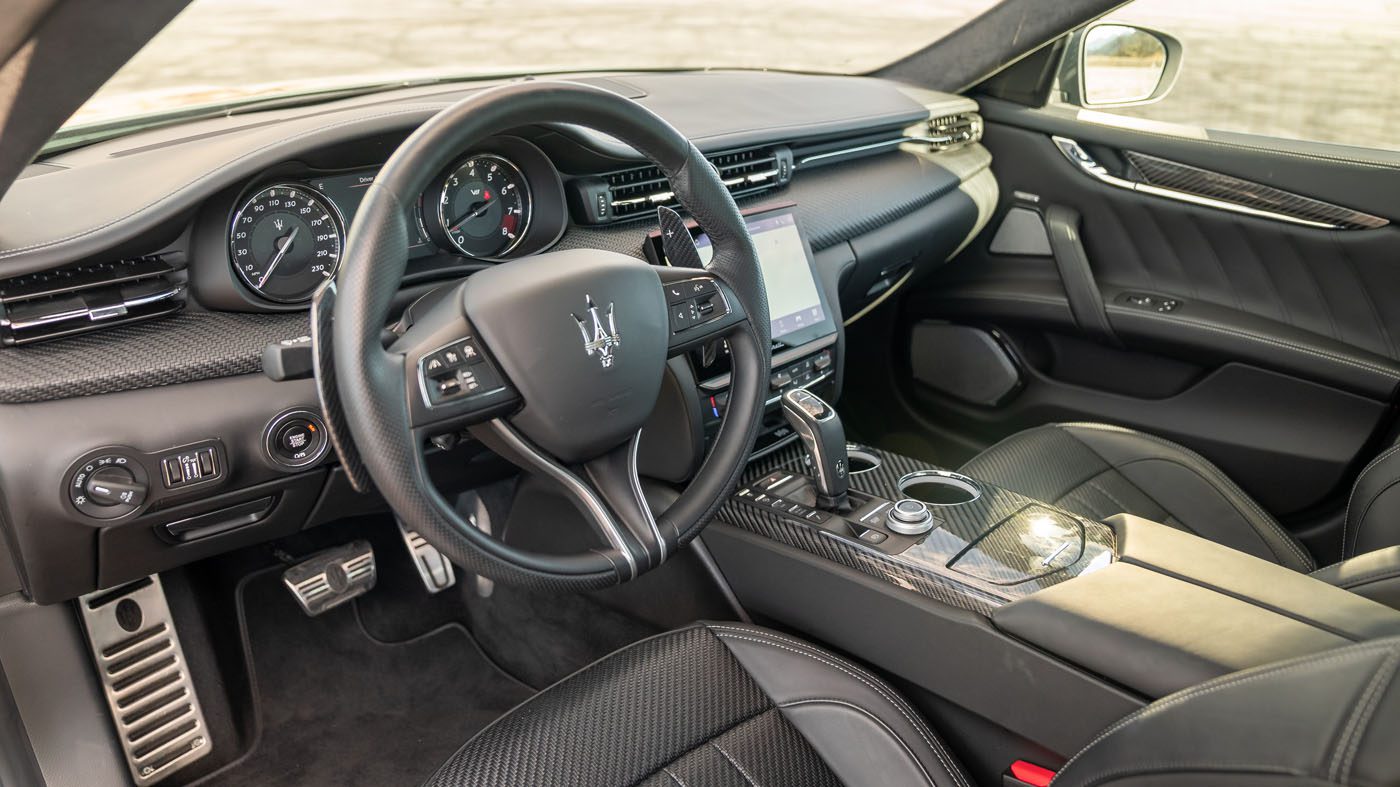
On the tech front, the Quattroporte received some much-needed updates, namely a new 10.1-in infotainment screen that isn’t available in the Levante. Although it’s another Stellantis parts-sharing exercise, it’s implemented well with Apple CarPlay and Android Auto smartphone connectivity, elegant graphics, and a high-resolution display.
In front of the driver lives a smaller seven-inch display flanking the two analog gauges in the instrument cluster. Although its competitors count on fully digital instrument clusters, there’s an old-school charm to the Quattroporte’s layout.
Examined in isolation, the Quattroporte interior isn’t half bad. It’s comfortable, quiet, and has all the tech you’d technically need. However, it is far from cutting edge when compared to the similarly priced Mercedes-Benz S 550 or BMW M760i xDrive. It is worth pointing out that this is largely due to the Quattroporte’s age. The Italian carmaker has plans to replace it in either 2024 or 2025, and if the brand’s latest products are anything to go by, it should be a significant improvement.
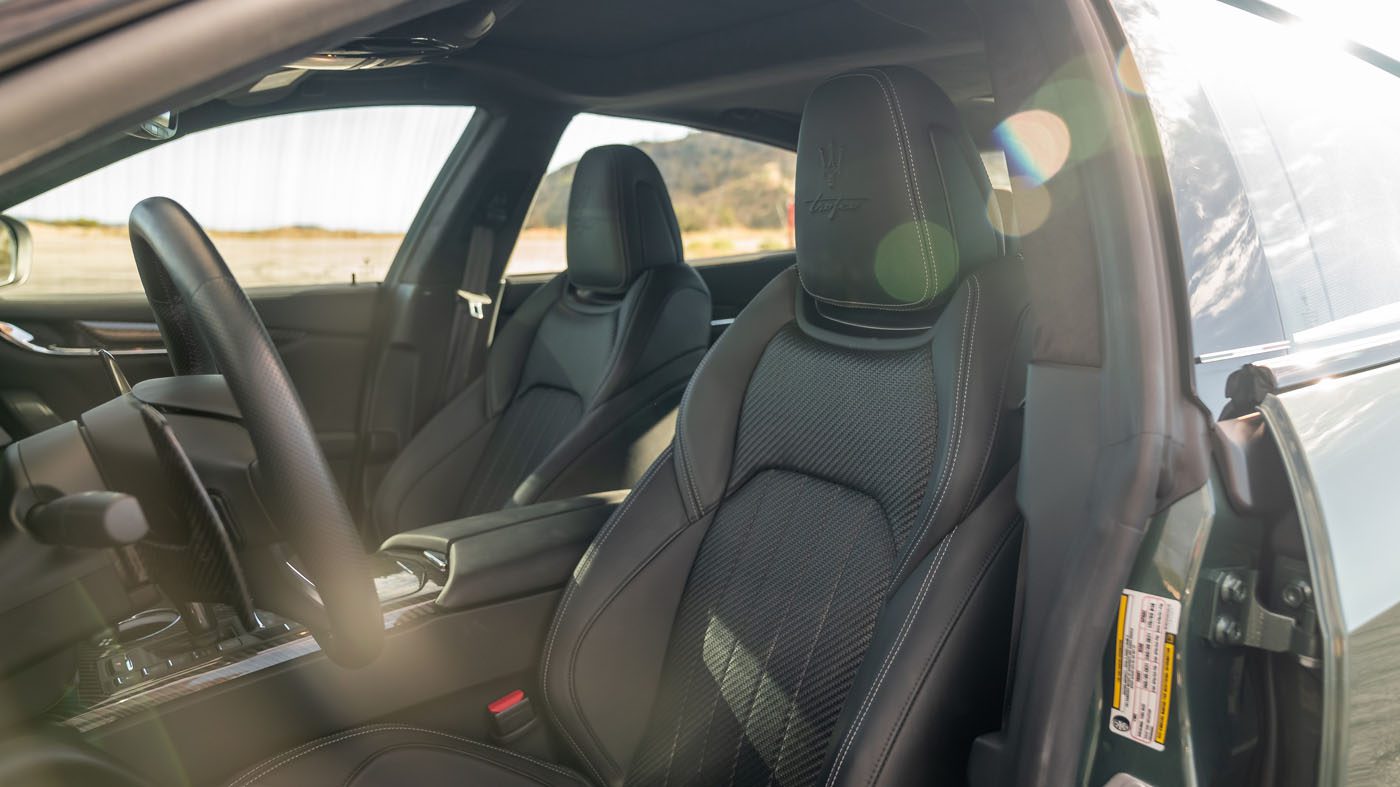
As stated earlier, this Trofeo starts at $148,895. This is more than both a comparable Mercedes-Benz S550 and BMW 760i xDrive. While the Maserati makes more power than both its German rivals, the three feel about on par in the real world. The main differentiator is engine character, as the Trofeo’s is far more lively than the toned-down Germans.
After a few days and a few hundred miles behind the wheel of the Quattroporte Trofeo, it’s clear that it’s far from the perfect vehicle. It lacks some of the latest tech and the highest-quality cabin materials. However, it’s likely the best-looking car in its segment, with the most exciting engine powering it. Despite its imperfections, the Quattroporte has plenty of charm. It’s now the most unique option in its segment, and despite its shortcomings, its blend of power and old-school flare has an appeal of its own.

